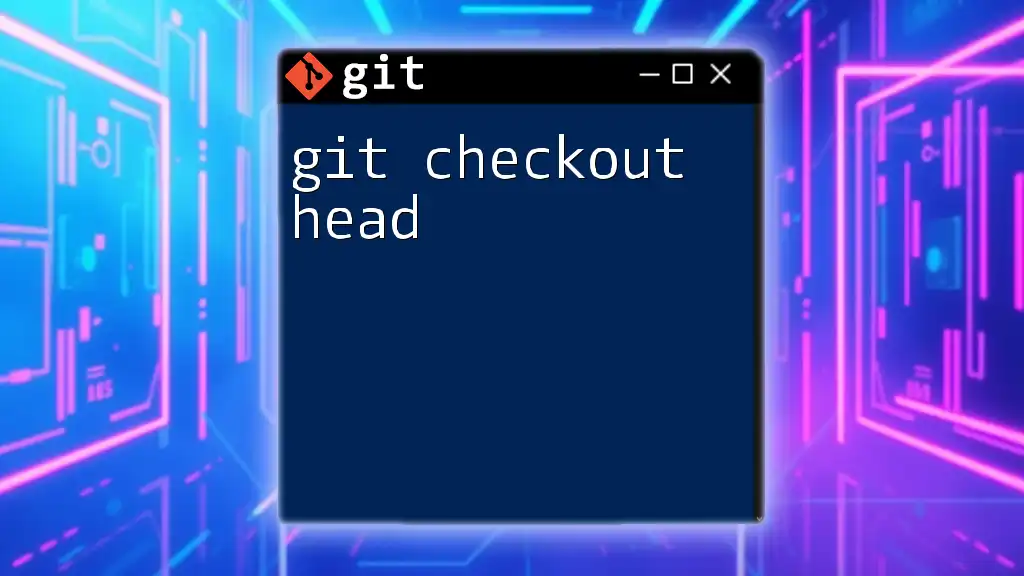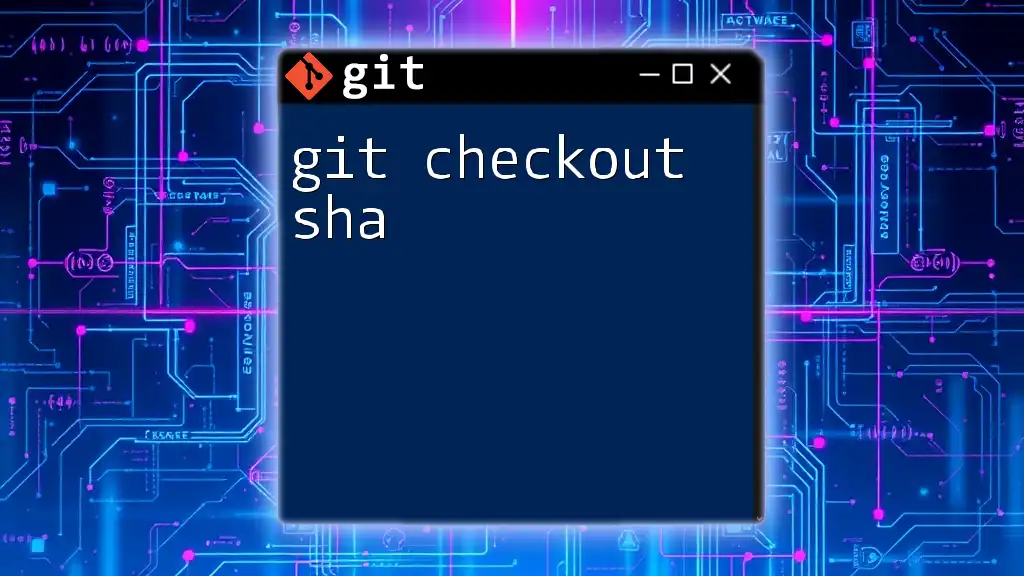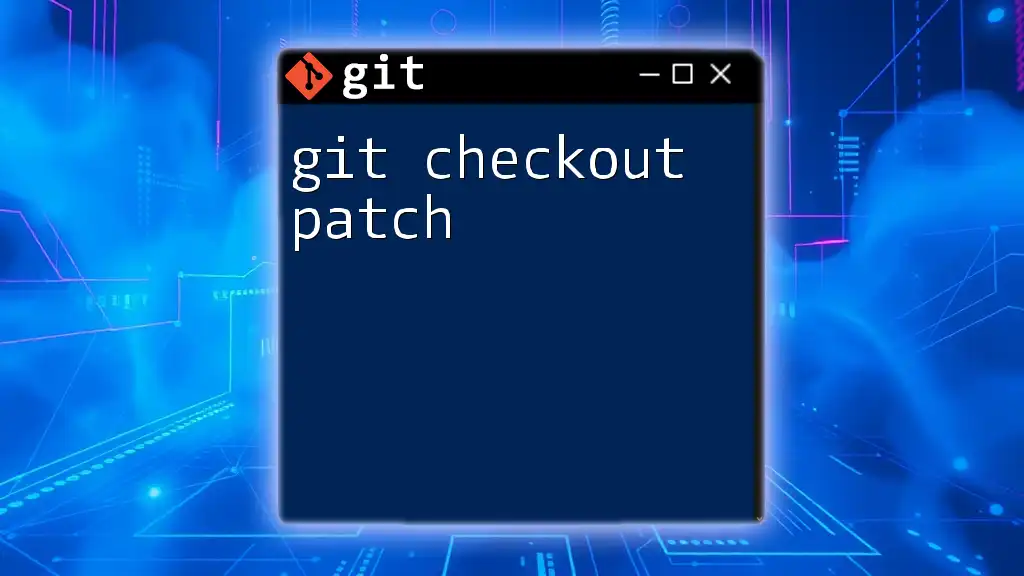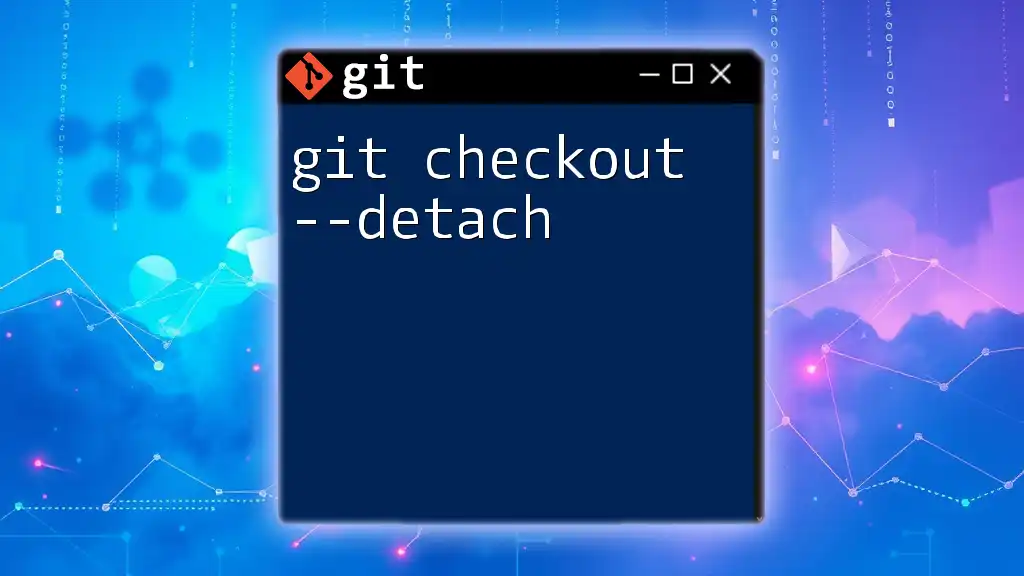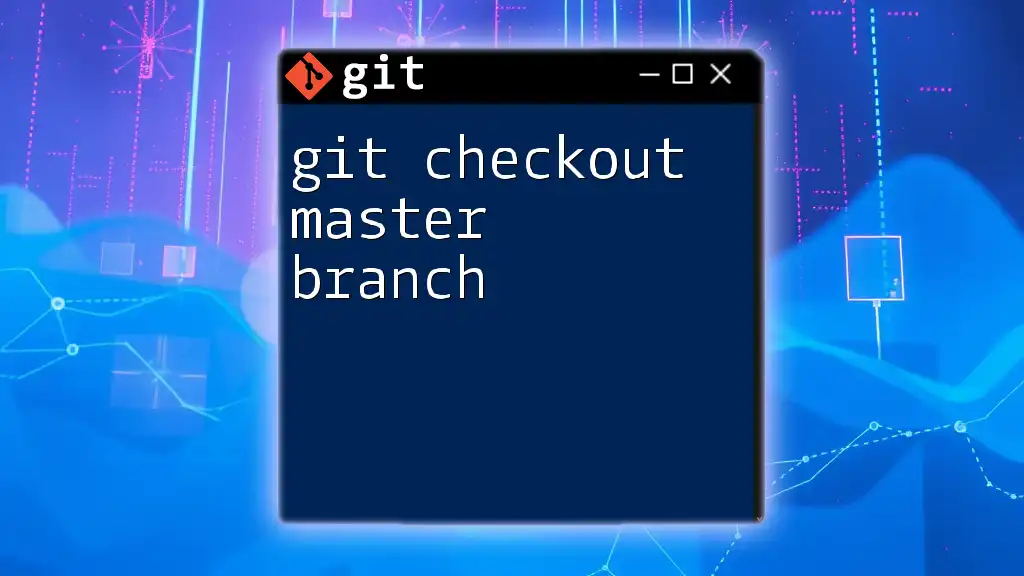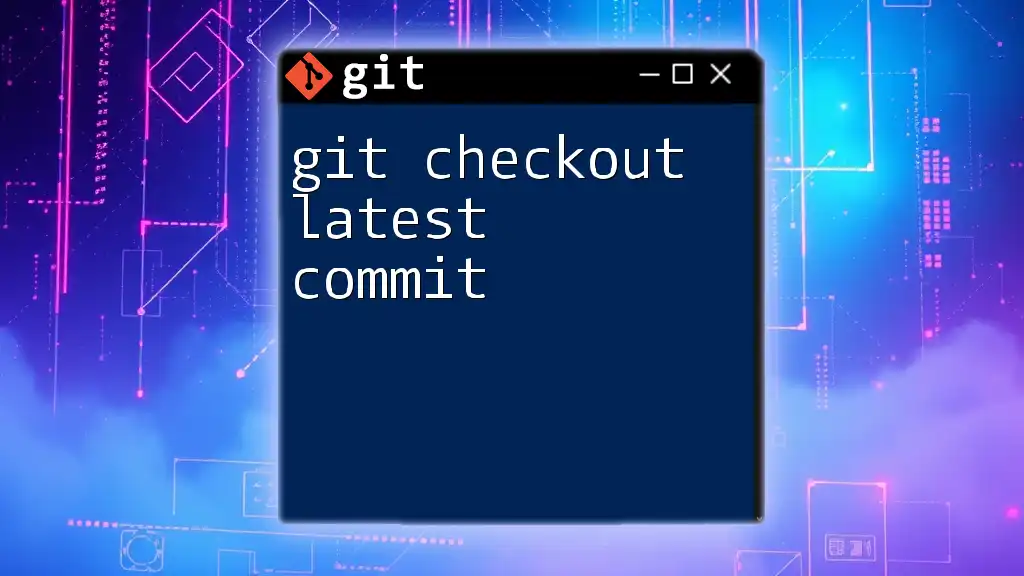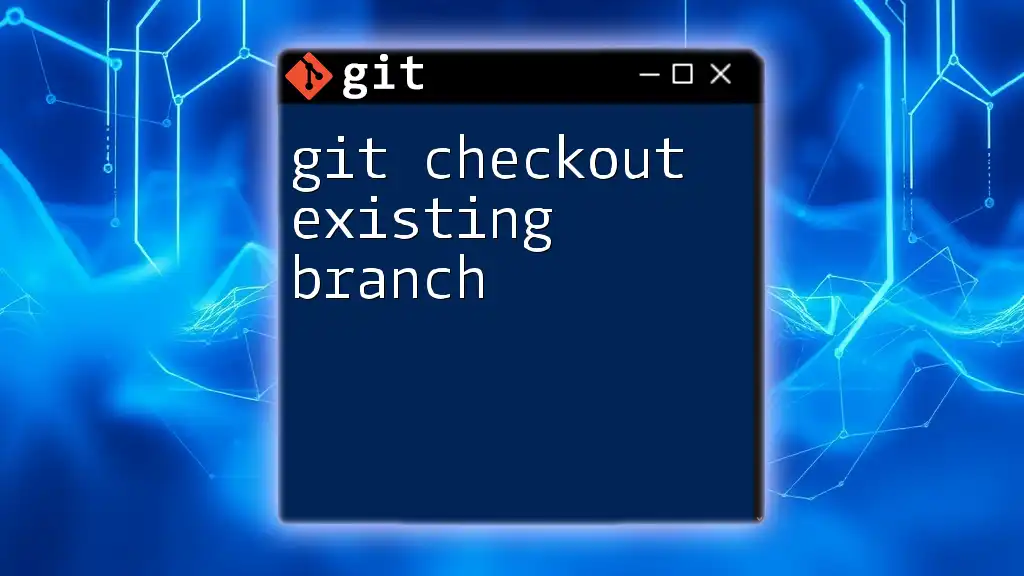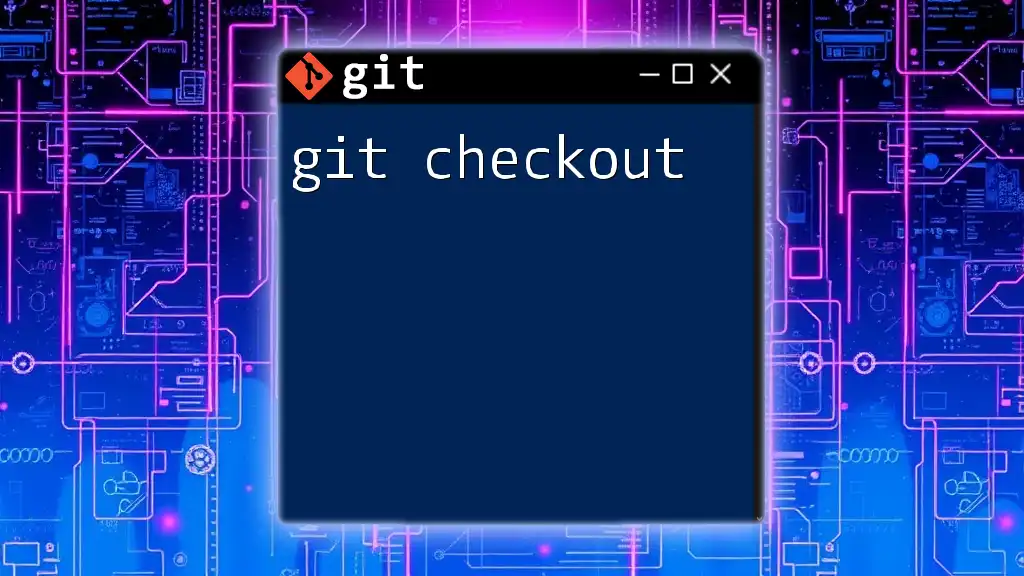The command `git checkout HEAD` is used to reset the working directory to the last committed state of the current branch, discarding any uncommitted changes.
git checkout HEAD
Understand the Basics of Git
What is Git?
Git is a powerful version control system that allows developers to track changes in their code over time. It enables teams to collaborate efficiently by maintaining a history of modifications, facilitating easier rollbacks to previous states and managing project versions. Its distributed nature ensures that every contributor has a full copy of the project repository, enhancing collaboration and backup processes.
Importance of Git in Software Development
Git stands as a fundamental tool for modern software development. It not only allows for seamless collaboration among team members but also helps in maintaining a clear history of who made which changes, when, and why. This transparency is crucial in large projects, where multiple developers may work on the same codebase simultaneously. Efficient change tracking aids in optimizing workflows and enhances accountability.
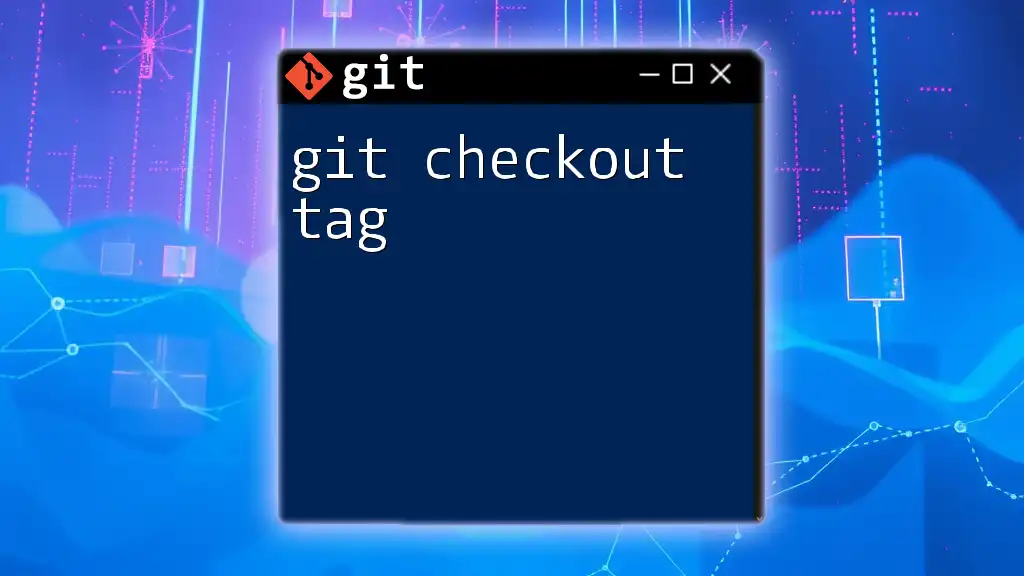
Introduction to `git checkout`
What is `git checkout`?
The `git checkout` command is a flexible command that enables developers to switch between branches or restore files to specific versions. It can be used to navigate your project's history, manage branches efficiently, and undo changes in your working directory. The general syntax for using the command is:
git checkout [branch|commit|path]
This highlights its versatility, but also underscores the need for understanding its various functions to utilize it effectively.
Common Use Cases for `git checkout`
`git checkout` plays a crucial role in various scenarios:
- Switching Branches: Instantly switch to a different branch to work on new features or bug fixes without affecting the current branch’s state.
- Restoring Files: Replace modified files in the working directory with the versions from the last commit.
- Checking Out Commits: Explore the project’s history by checking out files from previous commits.

Exploring `git checkout HEAD`
What is `HEAD` in Git?
In Git, `HEAD` refers to the current snapshot of your repository. It acts as a pointer to the latest commit on the active branch. Essentially, `HEAD` helps Git know which state your working directory should reflect. When you make changes and commit them, `HEAD` updates to point to this new commit.
The Syntax of `git checkout HEAD`
The syntax for using `git checkout HEAD` is straightforward:
git checkout HEAD [path]
This command tells Git to check out the state of the tracked files in the working directory from the latest commit, based on what `HEAD` points to. You can specify a file path or leave it blank to apply changes to all modified files.
What Does `git checkout HEAD` Do?
The primary function of the command is to revert changes made in the working directory back to their last committed state. This is especially useful when you want to discard local changes that are not yet staged or committed.
For instance, if you have modified a file named `example.txt` but realize those changes are incorrect, you can use:
git checkout HEAD path/to/example.txt
This command reverts `example.txt` to the version from the last commit, discarding any unsaved changes.

Practical Examples
Checking out the Last Committed Version of a File
Imagine you have made a few edits to a project file but want to discard your changes. You can use the following command:
git checkout HEAD path/to/file.txt
This will restore `file.txt` to its last committed state. It's a quick way to backtrack without the need to commit unnecessary changes.
Reverting Multiple Files to Last Committed States
Sometimes, you may need to revert several files. In this case, the command can be executed as follows:
git checkout HEAD path/to/file1.txt path/to/file2.txt
This restores each specified file to its respective last committed versions, ensuring that all unwanted changes across those files are discarded efficiently.
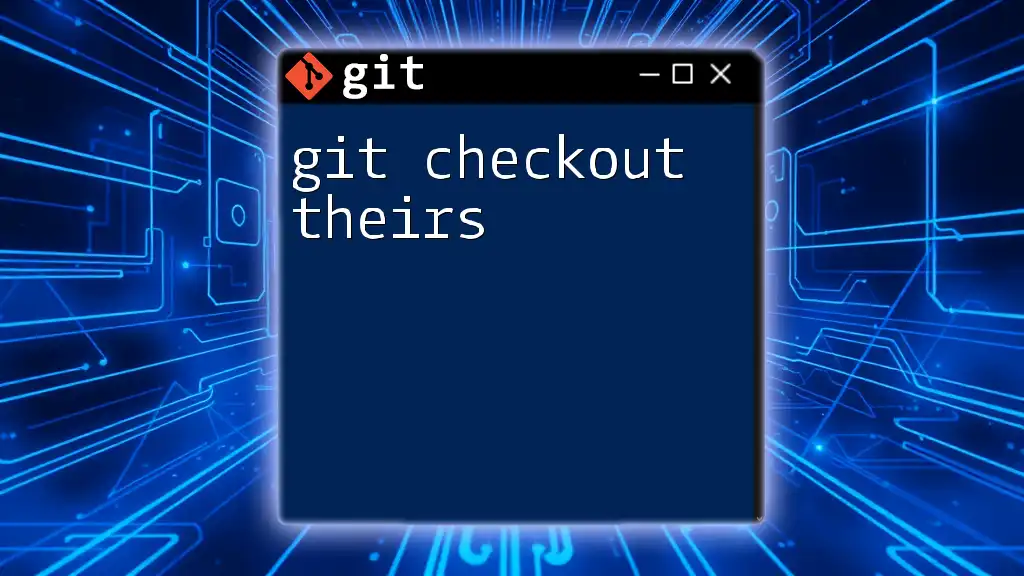
When to Use `git checkout HEAD`
Common Scenarios for Reverting Changes
`git checkout HEAD` is particularly useful in various situations:
- Accidental Changes in Code: If you have unintentionally modified a file but haven’t yet staged it, this command can quickly fix that.
- Incorrectly Staged Files: Before committing, if you find some files staged that shouldn’t be, you can revert those files to their last known state.
- Exploring Previous Versions: You may need to check how certain files looked previously without creating new branches, making `HEAD` a valuable reference.
Considerations Before Using `git checkout HEAD`
While `git checkout HEAD` is powerful, users must be cautious. This command permanently discards any uncommitted changes, which means you will lose those modifications without recovery options. Thus, it's advisable to commit or stash any important work before executing this command.
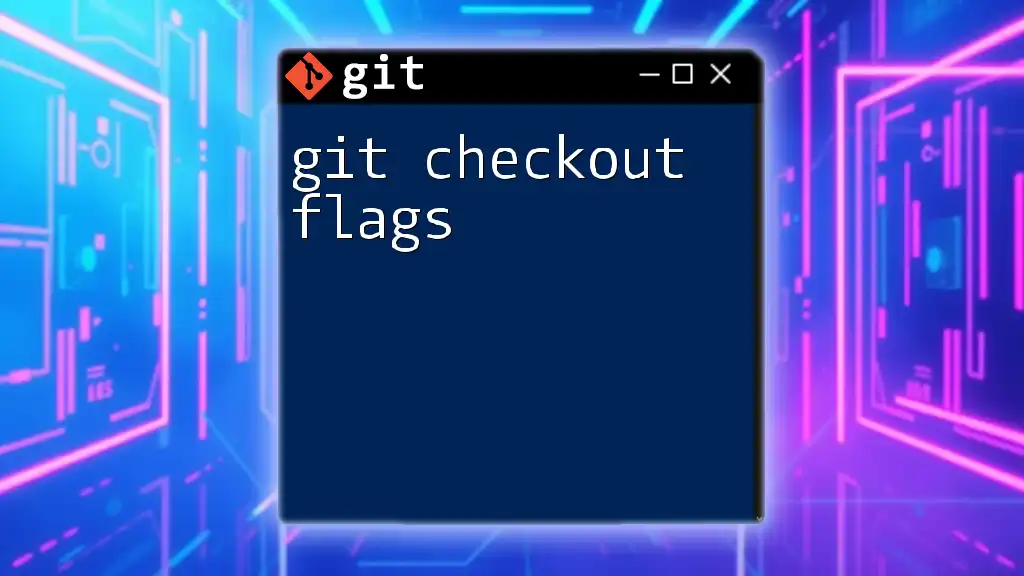
Additional Commands Related to `git checkout HEAD`
Alternative Commands
In recent versions of Git, the `git restore` command is also available, which serves as a straightforward alternative to `git checkout`.
git restore path/to/file.txt
This command effectively restores the file to its last committed state, similar to `git checkout HEAD path/to/file.txt`, but with a clearer intent focused on restoring files rather than switching branches.
`git reset` vs. `git checkout HEAD`
Understanding the difference between `git reset` and `git checkout HEAD` is equally important. While both can manipulate the working directory, they serve distinct purposes:
- `git reset`: Changes the state of your index and working directory. It can potentially move branches, which might not be desirable when you simply want to revert changes to a file.
- `git checkout HEAD`: Specifically reverts files back to their last committed state without altering branch pointers.

Conclusion
Summary of `git checkout HEAD`
To sum it up, the `git checkout HEAD` command is an essential tool for developers wishing to easily revert their changes or explore their project's history. Understanding this command enables efficient error correction and time-saving practices in your workflow.
Further Learning Resources
To enhance your Git skills further, consider diving deeper into these resources:
- Official Git Documentation: Learn everything from the fundamentals to advanced usage.
- Online Tutorials and Courses: Many platforms offer structured courses on Git for varying skill levels.
- Community Forums: Engage with the Git community on platforms like Stack Overflow or GitHub discussions for practical advice and shared experiences.

Call to Action
If you found this guide helpful, subscribe to our resource hub for more quick and concise tips on Git commands. Don't hesitate to leave a comment below with your questions or share your experiences using `git checkout HEAD` in your projects!

